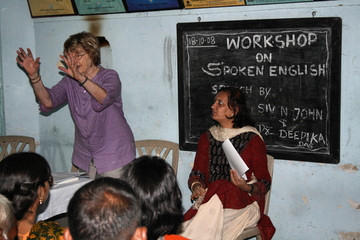
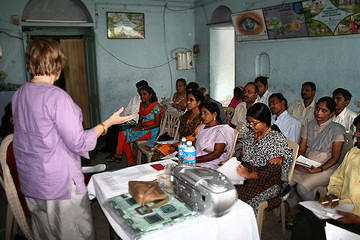
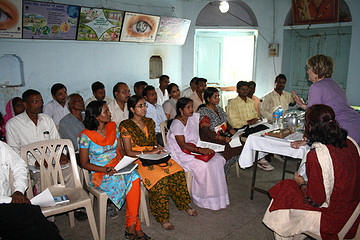
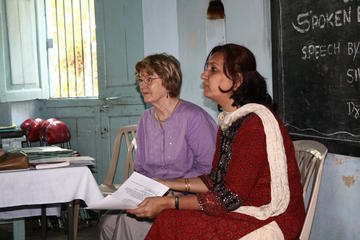
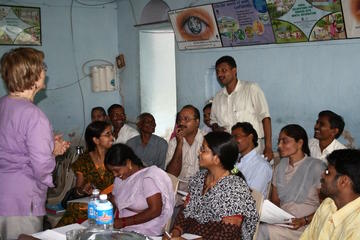
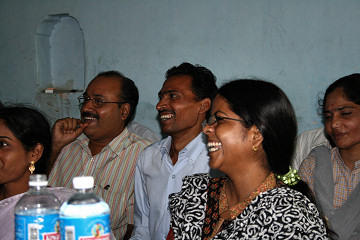
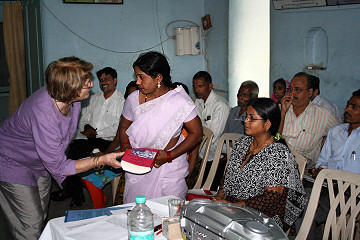
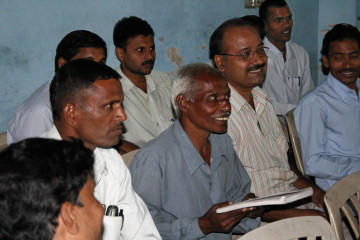
-- You are giving me the book.
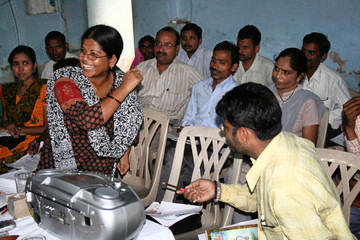
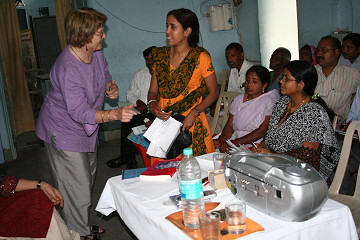
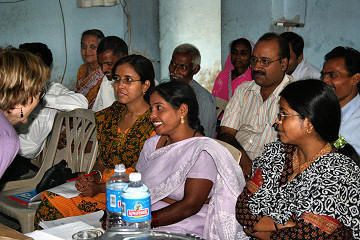
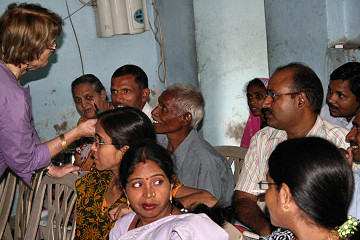
Impressions of DISCCPart 2, English-teaching workshop14-24 October 2008 |
Two days later, Siv and Deepika conducted a workshop for all the teachers and some of the personnel of DISCC. By this time, the two were in deep collusion. Tulsi and John could joke about the results of being married to English teachers!
Judging from the smiles and the generally relaxed ambiance, the event was a great success.
 |
 |
| Siv and Deepika | Teacher and class |
 |
 |
| Class | Siv and Deepika |
 |
 |
| Good answer | Smiles |
 |
 |
| I am giving you the book. -- What am I doing? -- You are giving me the book. |
Attention and smiles - Kishun Ji in the middle, the teacher from Ambedkar School |
 |
 |
| Vimla gave back the book! | Manju gives the right answer |
 |
 |
| More smiles - Manju and Vimla, teachers at Gangotri, and Vidya in the middle | Kishun Ji, teacher at Ambedkar in the middle -- and such a nice smile! |
Siv on teaching English: Deepika introduced me, mentioning that I was Swedish but had lived and taught in the United States and was now living in France. I then briefly explained how my method worked. It uses objects near at hand (books, pens, boxes, doors and windows), and gestures such as giving, taking, holding, walking, talking. With this method the students (who were teachers, but students for a day) were called on to answer questions in English without using books or depending on the written word in any way. For this occasion I had prepared sheets of paper with the written questions and answers plus CDs that will be kept in at least one copy for each school and center that will be using this English-teaching method. Tulsi will make sure that each center which needs one will have a CD player so that the teachers will be able to check on the pronunciation of the texts at any time.
Since students usually have a great deal of difficulty when it comes to speaking the language they are learning (usually from fear of making mistakes in pronunciation and structures), it is of the greatest importance to get them to speak in a natural context where it is perfectly clear (through gestures, etc.) what they are saying. Also, correcting them must not be in the form of criticizing but in the form of helping them out and ending up with the right answer. Shyness is the major hurdle that has to be overcome and the way of reaching this goal (as I see it) is by gently making the student repeat a couple of different but similar answers to the questions you ask, without overdoing the repetition for fear of increasing the embarrassment. Constant encouragement is imperative. When the student realizes that he is actually speaking English, it increases his motivation and his self-confidence to a point that is unobtainable through the traditional methods of reading a text and translating it.
Such old language-teaching methods are fortunately on their way out, at least in western countries. Methods very similar to the one I was presenting are gaining ground at least in good schools with teachers who abhor the moth-eaten methods of yesteryear.
The whole experiment seemed to have been very successful and when we later took it to the various schools (and to a group of CEP children), it seemed clear that the method was working and that teachers and students enjoyed and profited from this new (to them) and active approach to language teaching.
Continue to Part 3, Sarnath and leprosy programs.